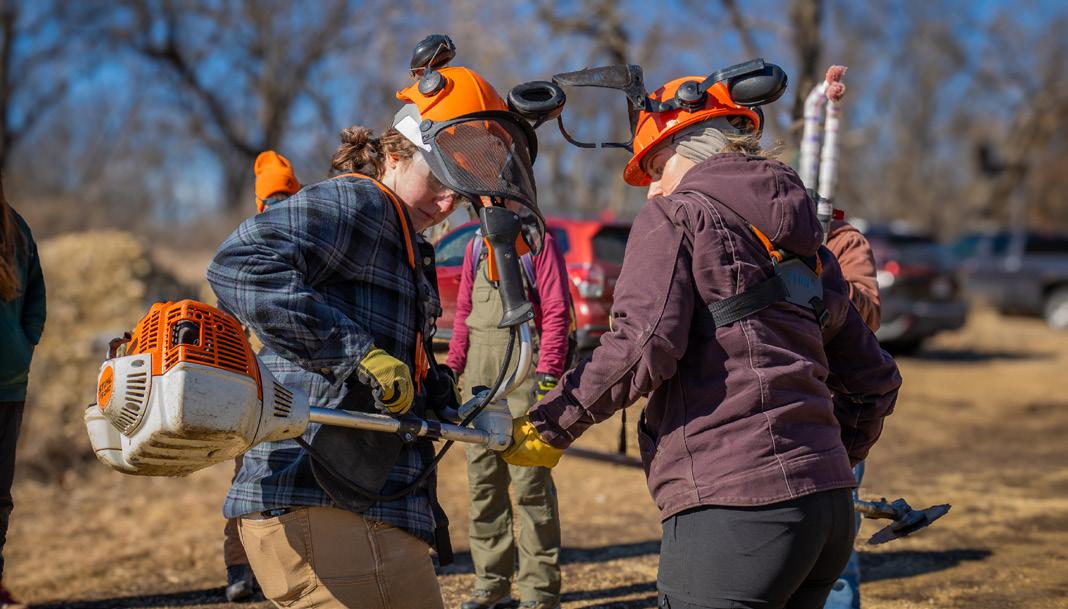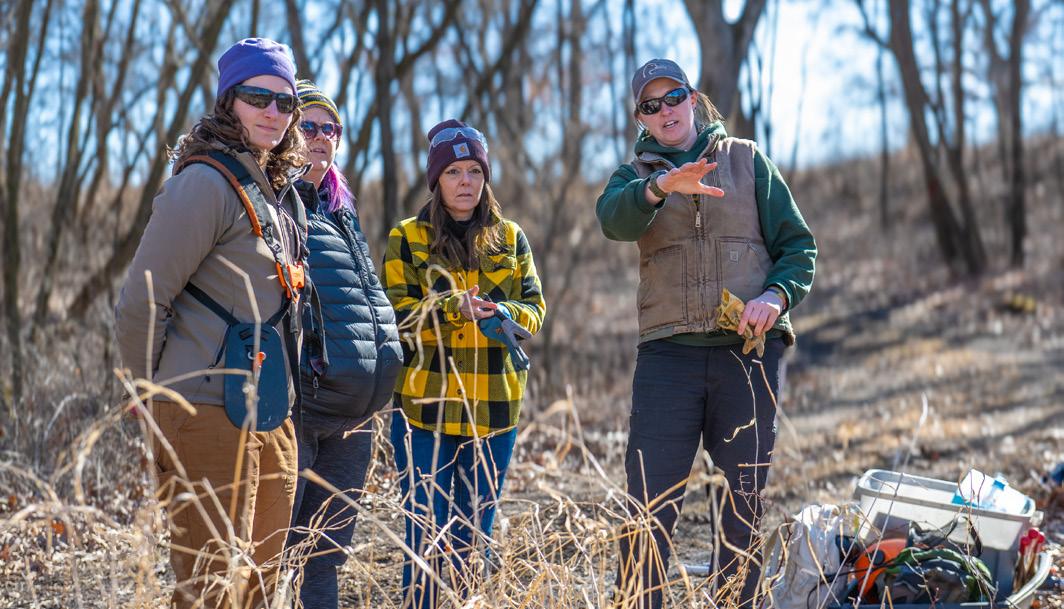
4 minute read
Women's Workday Promotes Land Stewardship
Krystal Pence
Krystal Pence is a freelance writer and photographer in Madison.
The hum of chainsaws echoed through the air as a group of conservation-minded women moved through the forest with quiet confidence — sharing knowledge, honing skills and creating connections with the land.
As they cleared brush, managed invasive species and reshaped the landscape with precision, it wasn’t just about lending a hand. It was about education, empowerment and proving that there’s a place in stewardship for everyone.
This past March, the 2025 Women’s Habitat Workday near Hook Lake State Wildlife Area in the town of Dunn gave women in southern Wisconsin the opportunity to engage in hands-on land stewardship. Now in its fourth year, the program’s mission is to offer women, female-presenting and nonbinary individuals a chance to learn land management skills alongside experienced female conservationists.
“This day creates a more welcoming and safer place, an opportunity for women to ask questions and feel comfortable using our power tools,” said Julie Widholm, a DNR wildlife biologist and event co-organizer.
The event is a collaboration of the DNR’s Wildlife Management and Natural Heritage Conservation programs and Pheasants Forever/Quail Forever. Britta Petersen, a Farm Bill biologist for Pheasants Forever, was among those who helped coordinate this year.
“A lot of us run or help with other women’s events — learn to hunts, landowner workshops, etc.,” Petersen said. “We’ve seen firsthand how women learning from other women makes a huge impact, and we wanted to provide that in this setting, too.”
Responsibility Shifts
The March workday took place at a farmstead with several outbuildings that was once owned by the late Jack McManus, a longtime Madison attorney. The property, now managed by the DNR, encompasses diverse Wisconsin landscapes, including oak savanna, prairie and even a bog.
The surroundings served as a dynamic hub for workday volunteers to learn and apply various land management skills such as using chainsaws, cutting brush and applying herbicides.
Women have a long tradition of tending the land and taking pride in doing so. Across generations, cultures and beliefs, many women around the world are connected by a love for the forests, meadows and savannas they call home.
Land stewardship is deeply rewarding but also comes with immense responsibility. Over time, more of that responsibility is shifting to women.
According to the National Woodland Owner Survey, conducted by the USDA Forest Service, 60% of forested lands in the Great Lakes, Northeast and mid-Atlantic regions are influenced by decisions made by women. That number is expected to rise, as more women attain the financial means or outlive male spouses to become sole landowners.
This shift presents an opportunity for women to take the lead in conservation efforts on their land and within their communities. Arguably, the most effective way to learn is to get involved and acquire skills in hands-on environments.
Support And Sharing
But women often are not afforded the same opportunities to acquire needed skills on a similar scale as their male peers, especially in a historically male-dominated field like conservation.
“Jobs I’ve had haven’t been all men, but usually more men than women on a team,” said workday volunteer Maggie Szpot, who works in the conservation field.
She shared that in her experience, newer, less experienced people are not always given the opportunity to learn new skills and equipment, as the more seasoned people will do it on their own rather than take time to teach someone else.
“That’s why I’m here — to get that experience and bring it back to my job,” Szpot said.
The sense of camaraderie was immediate at this year’s Women’s Habitat Workday event. A shared passion for conservation united those in attendance, empowering them to learn from and support one another in tending the lands we enjoy.
As summer begins, women will have increasing opportunities to gain knowledge and demonstrate their stewardship skills in the field.
“Don’t be fearful, and don’t be shy,” said workday volunteer Laura Hofstad. “There are other women who want to experience this same thing with you.”
Learn More
Habitat management volunteers are needed for a variety of projects and workday events around the state, particularly at state wildlife areas and state natural areas. For details, check out the DNR's Volunteering webpage.


